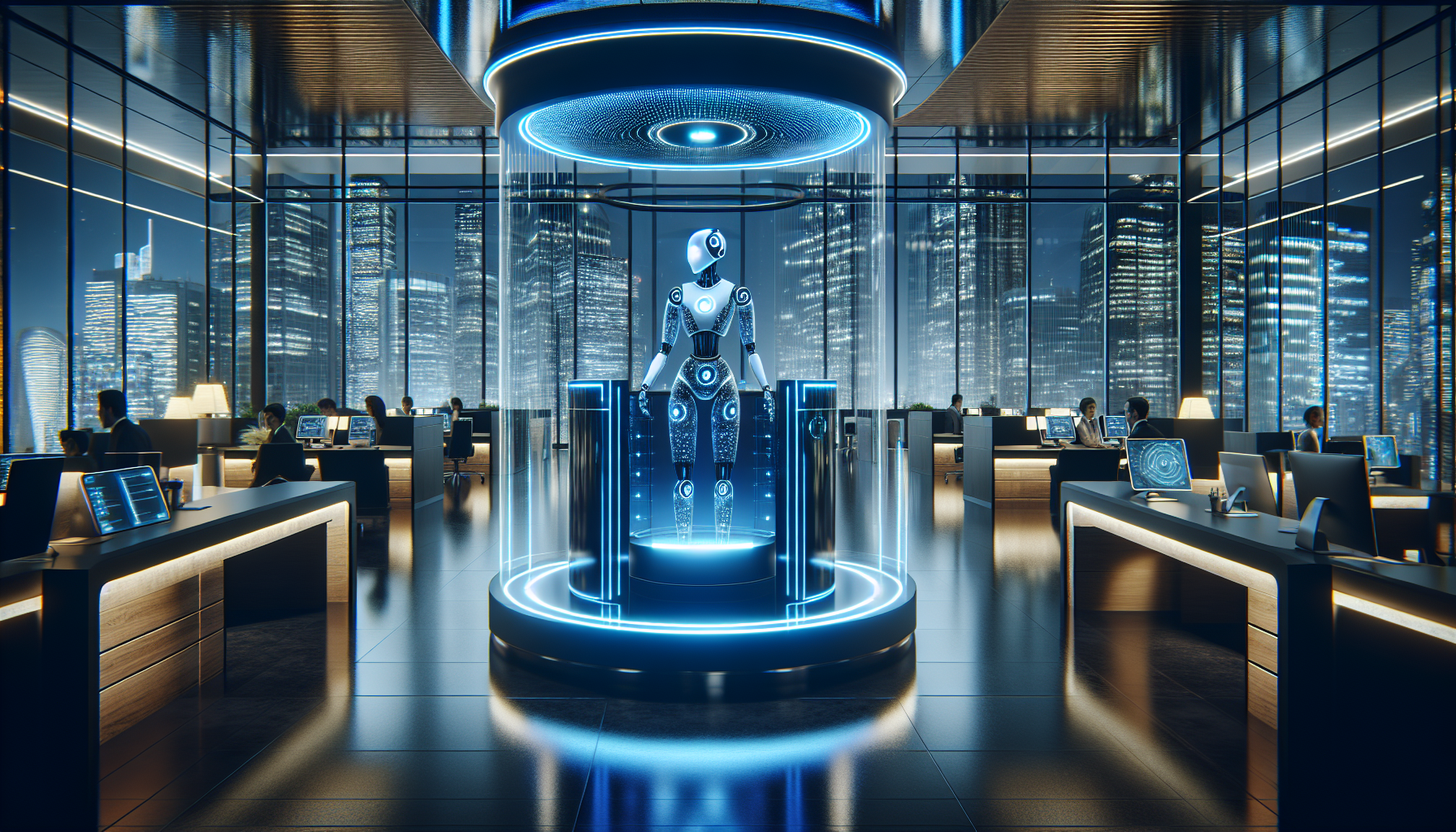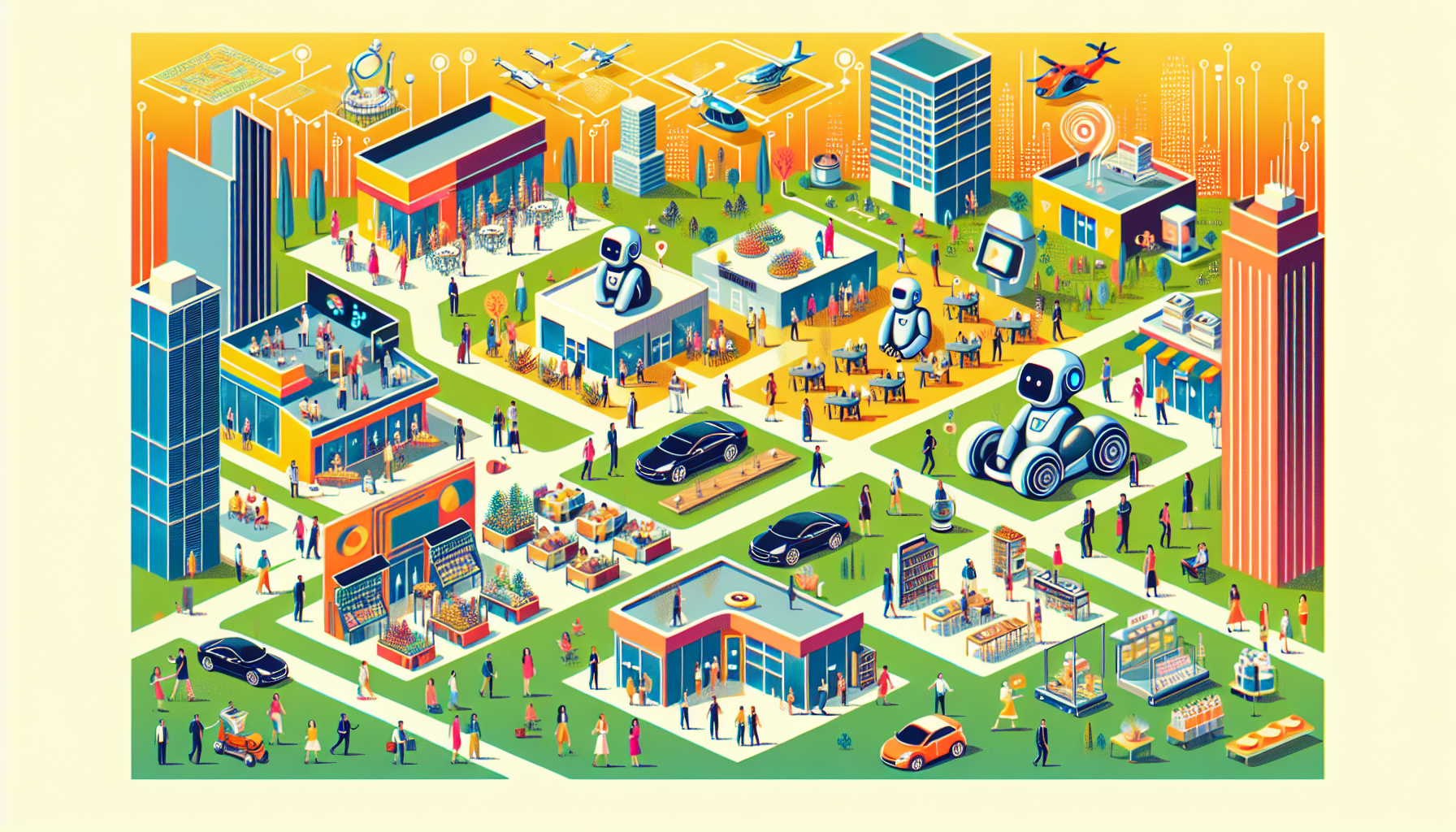
Businesses are continuously looking for innovative ways to improve their operations and customer service. One technology that has been making a significant impact recently is the AI Receptionist. These are digital assistants, powered by Artificial Intelligence (AI), that can handle a variety of tasks typically managed by human receptionists. Artificial Intelligence allows for automation of repetitive tasks, freeing up time for your human staff to focus on more complex issues.

AI Receptionists can operate 24/7, making them an efficient and cost-effective solution for businesses. They can manage tasks such as appointment scheduling, handling inquiries, forwarding calls, and much more. From SMBs to large corporations, the implementation of AI receptionists can make noticeable improvements in efficiency and customer experience.
AI Receptionists work by processing and interpreting natural language. Natural Language Processing (NLP), one of the core technologies behind them, allows the AI to understand and respond to human conversation. They can be integrated with a wide range of existing business systems including CRM, email, and telephony. The integration is usually simple, and most AI Receptionists offer APIs to support this.
A key aspect of AI Receptionists is their machine learning capability. This feature enables the AI to learn from interactions, get better at its tasks over time, and provide personalized experiences to customers. As data is gathered from each interaction, the AI Receptionist becomes more efficient and further improves its services.
Businesses keen on leveraging the capabilities of AI Receptionists need to consider their specific needs, the compatibility of the AI with their current systems, and the overall cost. Overall, integrating AI receptionists with existing system could very well mean a transformation in the way businesses operate and interact with their customers.
Next, we will delve into the core steps involved in the process of integrating an AI Receptionist with your existing infrastructure. Stay tuned!
In integrating AI receptionists into your current business framework, one pivotal step is conducting a thorough Compatibility Assessment. This process involves an in-depth look at your existing systems — such as Customer Relationship Management (CRM), Enterprise Resource Planning (ERP), and various communications platforms — and how they will harmonize with the AI receptionist software.
AI receptionists, like Zoovu or Mindsay, are programmed to provide streamlined customer experience and efficient business operations. However, their effectiveness mainly depends on how seamlessly they can be integrated with your tenured systems. Key areas that require careful scrutiny during compatibility assessments include software requirements, API capabilities, and potential system adjustments or upgrades needed.
In terms of software requirements, clarify whether the AI receptionist software is compatible with your operating systems, databases, and web browsers. This includes understanding the minimum version requirements for these platforms. Often, providers will list these specifications on their websites or provide them upon request. It's also advisable to run a compatibility test before finalizing any decision on which AI receptionist to select.
API capabilities also play a critical role in determining compatibility. The AI receptionist should be able to interact with necessary systems through well-documented and robust APIs, ensuring smooth data sharing and integration. For example, if you are heavily reliant on your CRM system for customer data, your AI receptionist should be able to easily access and update this information.
Finally, adjustments or upgrades needed should be feasible without causing major disruptions to your operational workflow or requiring massive system overhauls. This may range from security enhancements, user training, to minor software upgrades. It's prudent to anticipate these changes early and incorporate them into the implementation strategy.
The goal of a compatibility assessment may seem intricate, but it is vitally crucial. Only by ensuring that an AI receptionist can fully sync with your existing systems can you unlock its full potential and truly revolutionize your business operations.
Integrating innovative technology such as AI Receptionists into your current business system might seem like a daunting task. However, with the right strategy, this integration can occur smoothly, leading to enhanced efficiency and productivity. Below are some key strategies for effectively implementing an AI Receptionist into your existing systems with minimal disruption.

The first integration strategy involves leveraging Application Programming Interfaces (APIs). APIs act as the vital link between your existing systems and the new AI technology, making it possible for them to communicate and interact effectively. Appropriately designed APIs can seamlessly incorporate AI Receptionists into your business systems' current setup with minimal disruptions. They allow AI receptionists to access necessary information to complete tasks, enhancing business operations.
Another integration approach includes using Middleware solutions. Middleware serves as the "glue" between applications, providing the necessary conduit to facilitate interaction between the existing business systems and the AI Receptionist. It can help in managing the vast array of data flowing between various system components, thereby enabling the AI Receptionist to function effectively. Companies such as Oracle offer robust middleware solutions that can substantially smooth out the integration process of AI receptionists.
A third strategy is Data Syncing. By synchronizing the data flowing through different parts of your business system, you pave the way for an AI Receptionist to have real-time and accurate information. This is critical as AI receptionists rely heavily on data to handle various tasks like scheduling appointments, answering client queries, managing communication channels, and many more. To ensure flawless data syncing, the use of reliable data synchronization software is advisable.
In conclusion, adopting an AI Receptionist is a move towards modernity and efficiency. With methods like API utilization, Middleware solutions, and data synchronization techniques, your business can smoothly integrate this revolutionary technology and enjoy the substantial benefits that come with it.
As businesses move towards greater digitization, integrating your AI Receptionist with your existing business systems is a powerful step that can tremendously enhance operational efficiency. A robust solution to achieve seamless integration is using Zapier, a web-based service that connects your AI receptionist with over 9000 apps.
How can Zapier be used in integrating your AI Receptionist with your existing business systems? Zapier acts as a bridge for automation, connecting the AI receptionist to databases, collaboration platforms, customer relationship management (CRM) software, and incredibly, even more. Zapier supports an extensive suite of apps including, but not limited to, Google Sheets, Slack, Asana, Zoho CRM, and HubSpot. The automation facilitated by Zapier can therefore synchronize everything from contact data to meeting information across different platforms.
Setting up an AI receptionist on Zapier comes with the added advantage of minimized manual entries and inevitable human errors. Instead, the hitch-free synchronization of data across various platforms enables a business to focus on core competencies. Real-time data flow, enhanced team collaboration, and 24/7 up-to-date information are just a few advantages of Zapier’s automation capabilities when integrated with an AI receptionist.
What's more, using Zapier doesn’t require any coding knowledge. A series of simple triggers and responses - or "Zaps", as they're known - is all it takes to connect the AI Receptionist to your preferred apps, thus improving your business processes. Creating a Zap is as easy as selecting the apps you wish to connect, choosing a trigger and defining the subsequent action. This creates an automated workflow that links your AI receptionist with other key business tools.
In conclusion, Zapier and its integration capabilities with an AI Receptionist can be a true game-changer for businesses. It brings about enhanced productivity, smoother workflows and ultimately, improved customer satisfaction.
Over the years, multiple businesses across various sectors have successfully integrated AI receptionists into their existing systems, with impressive results. We can learn a great deal from their challenges, solutions, and outcomes.

One prominent example is that of the multinational law firm Linklaters. They implemented an AI receptionist named Lara as part of their mission to strengthen client engagement and effectiveness. Initially, there were concerns about the inability of the AI to mimic human warmth and empathy. However, over time, Lara proved to be an integral part of the firm, enhancing customer services and reducing the administrative burden on employees. The firm reported better client engagement, enhanced efficiency, and considerable cost savings.
Another significant case is of a multinational insurance company that adopted a AI-powered virtual assistant to deliver 24/7 customer support. The initial struggle was to ensure that the AI understood and responded to customer queries accurately. Regardless, through extensive training and continuous updates, the AI assistant was eventually able to handle 85% of customer inquiries independently, resulting in a 30% reduction in customer service costs. Customers reported higher satisfaction as a result of reduced waiting times.
Technology and retail giant Alibaba has also adopted the use of AI receptionists, introducing "AliMe" in their retail stores. Although the main challenge was the potential risk of job redundancy for the human employees, AliMe was added to the workforce to assist the human staff rather than replace them. This increased efficiency in dealing with customer queries and improved overall operational efficiency. Retail stores reported a significant boost in customer experiences and overall sales.
These case studies demonstrate how businesses have navigated the challenges of integrating AI receptionists into their existing systems, highlighting both the common and unique hurdles they have overcome, and the significant benefits they have achieved in doing so.
AI receptionists are rapidly changing the business ecosystem, offering numerous opportunities to automate, enhance efficiency, and provide superior customer service. Yet, emerging trends suggest that these technologies are on the verge of even more substantial leaps. Going forward, advancements in AI learning, natural language processing, and predictive analytics hold the promises to significantly revolutionize the integration of AI receptionists with business systems.
The potential improvements in AI learning alone could boost the versatility of AI receptionists. These advancements could streamline the onboarding process, making it simpler and quicker to integrate these systems into businesses. Horizons of adopting machine learning models that allow AI receptionists to continually enhance their performance will be a reality. This would lead to more nuanced interactions with clients and better handling of a broader spectrum of tasks with little to no human intervention.
Moving closer to the human-like interaction, the future will witness significant advancements in natural language processing (NLP). It will help AI receptionists to understand and respond to user queries more effectively, encouraging more intuitive and meaningful engagement with clients. NLP will also enable these systems to comprehend various regional dialects and languages, broadening their efficacy and reach.
The future might also behold how predictive analytics can be leveraged to gear up the performance of AI receptionists. They may predict client needs or identify trends, offering solutions even before the issue arises, lending businesses a significant competitive advantage. The point where AI receptionists start offering insights based on the data they interact with about customer behavior, preferences, or patterns would also enhance business decisions and strategies, marking an imperative evolution.
In conclusion, the inevitable advancements in AI learning, natural language processing, and predictive analytics will not only impact the integration of AI receptionists with business systems but also dictate the next frontiers in customer engagement and service delivery. Businesses need to brace themselves to ride on this tide of technological revolution.
Start your free trial for My AI Front Desk today, it takes minutes to setup!








